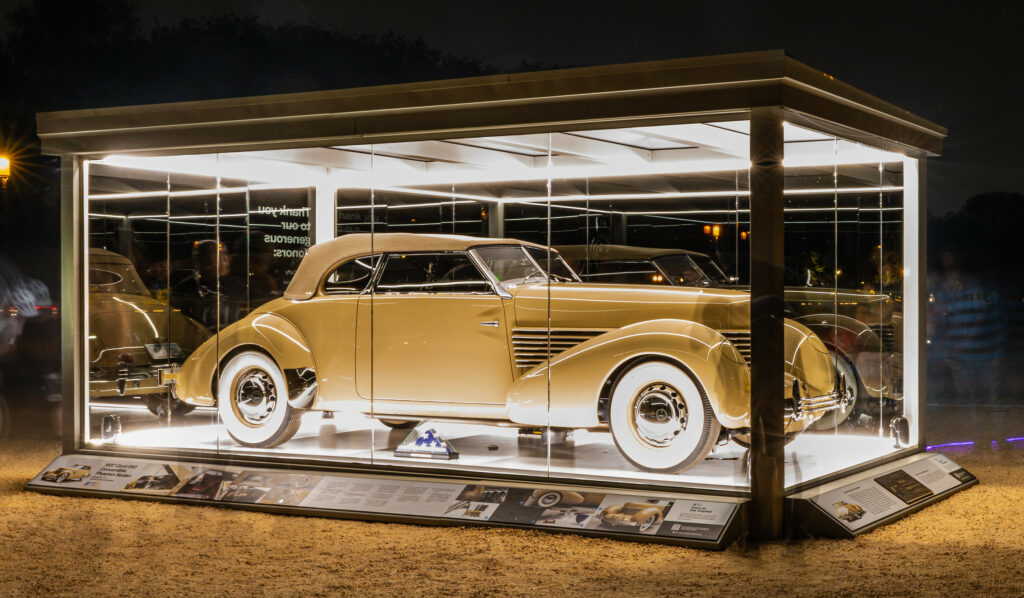
In early September, 2023 Amelia Earhart was once again in the news. However, it had nothing to do with her flying prowess or her unsolved disappearance over the Atlantic in 1937. Rather, it had to do with a certain 1937 Cord 812 Phaeton convertible that was owned by Earhart, lost, rediscovered, and put on display for a week during the annual ‘Cars at the Capital’ exhibition in Washington DC. As it turns out, while Earhart is known for her way around an airplane, she was also an avid enthusiast of exceptional automobiles.
The unique Palm Beach Tan Cord convertible that made its way to the National Mall is just one of the many automobiles connected to the celebrated pilot. It became famous in a 1936 photograph, parked in front of Earhart’s Lockheed 10E Electra, the airplane she would take on her final flight. The Phaeton was produced by the Cord Automobile division of the Auburn Automobile Company and introduced at the 1935 New York Auto Show to great acclaim. It has been suggested that Earhart was drawn to the Phaeton not only for its style, luxury, streamlined airplane design, and innovative engineering, but also for its impressive performance capabilities. Earhart’s desire for adventure, not to mention her love of power and speed, was reflected in her many transportation choices.
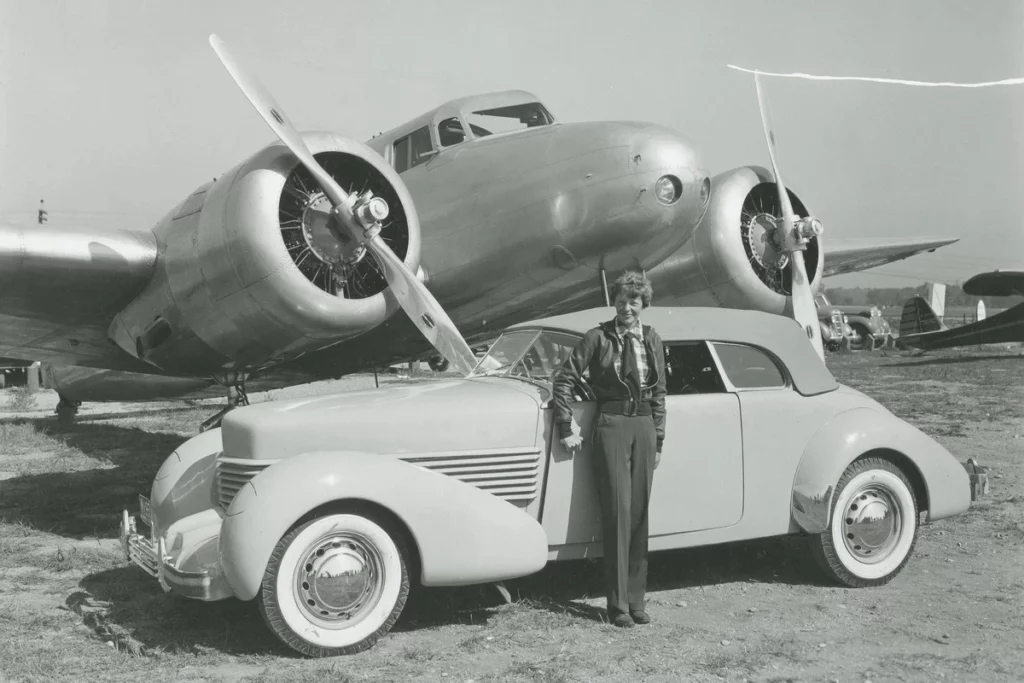
I first learned of the 1937 Cord while visiting the Auburn Cord Duesenberg Museum in Auburn, Indiana. While the museum does not have a 1937 Phaeton on display, the famous photo of Earhart and the car is part of a video exhibit assembled to honor the marketing genius and business savvy of company founder Ernest Lobban [E.L] Cord. Although Earhart’s cars are absent, there are other references to the pilot in the ACDM. Information accompanying a 1932 Auburn 12-160A Coupe in the museum places the vehicle into context – ‘this year in history’ – by citing Earhart’s solo nonstop flight across the Atlantic Ocean. As I discovered during my recent visits to automotive museums throughout the Midwest, Earhart’s fame, as well as her fascination with cars, is often summoned to bring attention to a particular automotive manufacturer or model as well as to invoke a significant moment or event in automotive history.
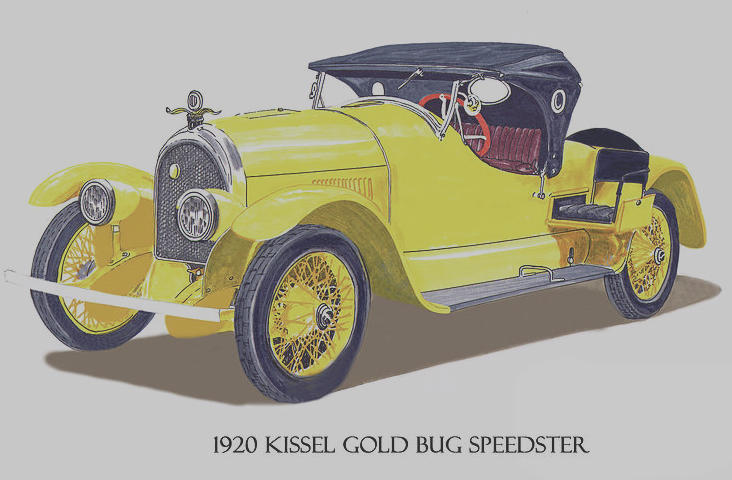
The Wisconsin Automotive Museum in Hartford, Wisconsin, includes newspaper clippings of the famous aviator driving a Kissel Gold Bug Speedster, which Earhart often referred to as the ‘Yellow Peril.’ Legend has it that, finding the idea of a cross country train trip boring, Earhart purchased the car to travel from California to Boston with her mother in tow. The yellow car was no doubt an attention-getter as Earhart made her way across the country collecting tourist stickers and enthusiastic fans along the way. As Earhart remarked, ‘the fact that my roadster was a cheerful canary color may have caused some excitement’ (Forney). The Kissel Kar Company, a manufacturer of cars and trucks from 1906-1931, was founded in Wisconsin; the Kissel family was instrumental in the development and maintenance of the museum. While the original car is located in the Forney Museum of Transportation in Denver, Colorado, the Wisconsin Museum does have a similar vehicle on display. The Gold Bug was a popular choice among celebrities of the time. As a Wisconsin-based manufacturer, Kissel made use of the connections to famous individuals, including Amelia Earhart, to bring attention to its line of popular sports vehicles.
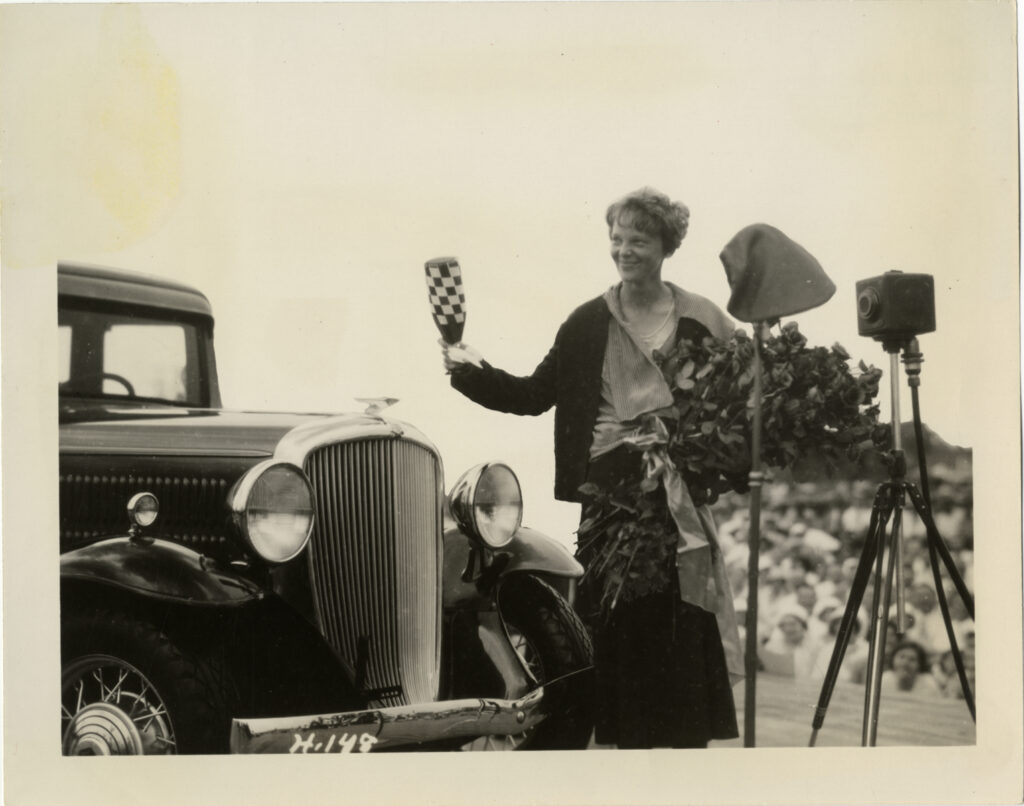
The Ypsilanti Automotive Heritage Museum in Ypsilanti, Michigan, and the Stahls Automotive Collection in New Baltimore, Michigan each exhibit promotional material focused on Earhart’s connection to the Hudson Motor Car Company’s aviation-themed Terraplane brand. The Detroit auto manufacturer called upon Earhart’s celebrity and aviation know-how to introduce its latest offering in 1932. The news articles featured at both museums show Earhart at the Hudson plant christening the first Terraplane off the assembly line with a bottle of champagne. Earhart’s association with the Hudson Terraplane continued for the life of the brand; photos of Earhart with various models appeared in a variety of publicity releases, often accompanied by Terraplane’s tagline: ‘On the sea that’s aquaplaning, in the air that’s aeroplaning, but on the land, in the traffic, on the hills, hot diggity dog, that’s Terraplanning!’ The Ypsilanti museum features a Hudson Terraplane in its exhibit; Stahl’s does not, suggesting that the mention of Earhart in association with an automobile is often reason enough for the aviation pioneer’s inclusion.
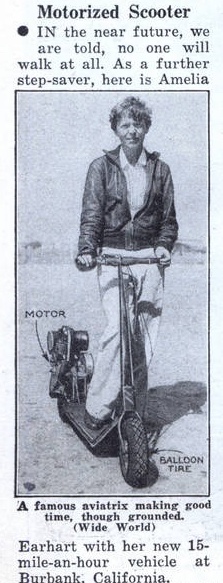
Earhart was also called upon to promote the Autoped, a lightweight vehicle marketed as fitting the needs of women while offering them a taste of freedom. Promotional materials included the claim that Earhart often relied upon her Autoped for commuting and working.
The inclusion of Amelia Earhart in museums devoted to the automobile, with or without a vehicle, suggests a number of things. First, it recognizes the importance of celebrity – particularly a high-profile individual with a recognized automotive interest – in automotive advertising and marketing. However, I also believe that, due to the overwhelming male domination of the auto industry since its inception, any connection to women in relation to the automobile is worth considering. The majority of auto museums I have visited appeared to have made a conscious effort to represent women in the exhibits, even when that connection is somewhat tenuous. However, while the incorporation of high-profile women such as Earhart in museums devoted to the automobile is admirable, I believe the inclusion of ordinary women, as important automotive consumers, drivers, and influencers, needs to be considered as well.